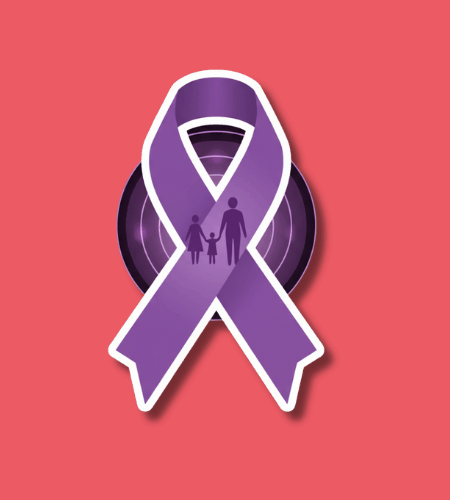Wear Purple for Domestic Violence Awareness Day (also known as “Purple Thursday”) is observed each October, typically on the third Thursday of the month. In 2025, it falls on Thursday, October 16. This day encourages people across communities to wear purple as a visible show of support for survivors of domestic violence and to raise awareness about abuse and prevention.
Table of Contents
History and Symbolism
The practice of wearing purple to raise awareness for domestic violence comes from purple’s symbolic associations—courage, survival, and peace. Purple was chosen as the awareness color for domestic violence because it evokes a visual solidarity and draws attention to the issue. Over time, organizations and advocates began coordinating a specific day—Purple Thursday—to encourage widespread participation by asking individuals, workplaces, schools, and communities to don purple clothing or accessories.
Because it falls during Domestic Violence Awareness Month (October), Wear Purple Day acts as a focal point—a moment when people collectively pause, visibly demonstrate support for survivors, and open up conversations about prevention, help, and shifting social norms.
Why the Day Matters
Domestic violence is often hidden behind closed doors. Wear Purple Day serves as a public reminder that many suffer in silence and that no one should do so alone. The color purple connects people through a shared statement of belief: survivors deserve to be heard, believed, and supported. Wearing purple can spark questions, open doors to helpful conversations, and show solidarity.
Additionally, this day helps maintain momentum for advocacy—highlighting gaps in services, pushing for better resources, and encouraging systemic change. Because purple is a bold visual, when many people wear it in unison, it brings visibility to issues that are too frequently ignored or minimized.
- It demonstrates solidarity with survivors in a simple but powerful way
- It raises the visibility of domestic violence prevention efforts
- It prompts discussion and awareness through visible symbols
- It supports and encourages organizations working in this space
- It helps normalize the idea that domestic violence is a public concern, not a private shame
How to Observe Wear Purple for Domestic Violence Awareness Day
On the designated day, wear something purple—a shirt, scarf, pin, tie, or accessory—to show support. Encourage friends, coworkers, neighbors, and community groups to join. Use social media to post your photo wearing purple and share a thought or message about why you support survivors or what prevention means to you. Use or create hashtags like #PurpleThursday or #WearPurple to amplify the message.
Organizations, schools, and workplaces can host small events: a “purple moment” announcement, a moment of silence, or invite someone to speak about domestic violence awareness and resources. Distribute flyers, share helpline information, or set up a display in common areas. Even simple conversations—“Why are you wearing purple?”—can be powerful entry points for awareness and connection.
Here are some ideas:
- Wear purple clothing or accessories and invite others to join
- Post a “purple selfie” with a message about why you participate
- Host or attend a local Purple Thursday event or awareness gathering
- Share resources, contact lines, and support info in your network
- Ask someone you know who works with survivors about what help is needed
Wear Purple Day Dates Table
| Year | Date | Day |
|---|---|---|
| 2025 | October 16 | Thursday |
| 2026 | October 15 | Thursday |
| 2027 | October 21 | Thursday |
| 2028 | October 19 | Thursday |
| 2029 | October 18 | Thursday |
Subscribe to our newsletter and never miss a holiday again!

